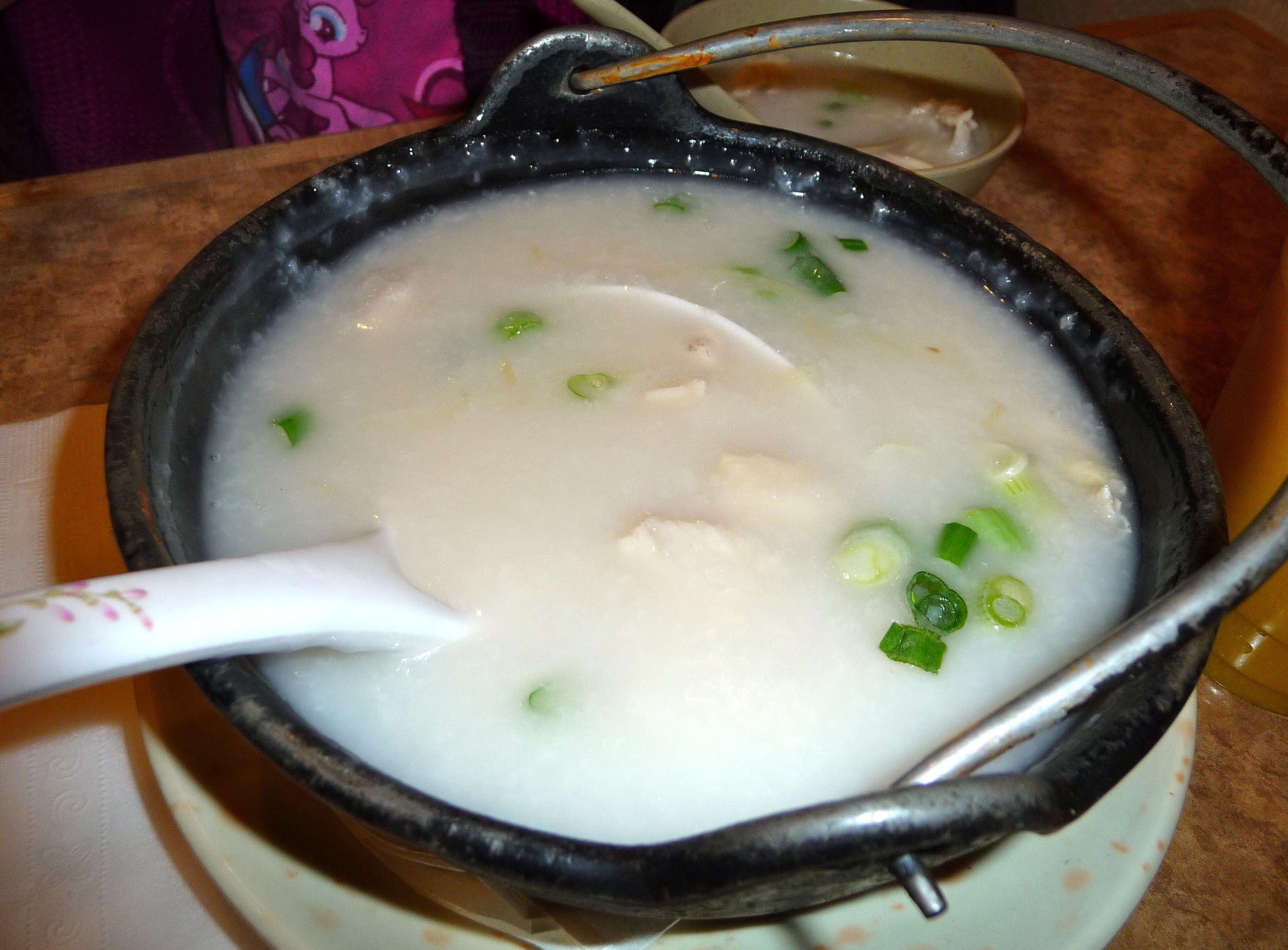The Ultimate Comfort Food
We saw this word before we left on our adoption trip to China, and we knew it was supposed to be a “rice porridge” that kids ate. Outside of that, we knew nothing.
Our first experience with it was at the breakfast buffet at our hotel in Beijing - specifically, seeing it sitting there, and deciding to pass. The color and consistency was not exactly appealing to Western eyes - a goopy, translucent thin gelatin with overcooked rice and who knew what else suspended inside. The smell was a mystery - hot and steamy, familiar somehow, but without a distinct aroma.
Some people are tempted to call congee the Chinese equivalent to grits, or Cream of Wheat, especially since it’s so often eaten at breakfast (by young and old alike, as it turns out.) Don’t fall for the Congee = Grits line. We figured even a Southerner would never pick this food unless absolutely necessary, which so happened to be our next experience...
When we were united with our daughter, the instructions we received from the Child Welfare administrator told us she ate congee twice per day. So, that night we ordered a bowl from room service and held our breath.
She knew immediately what was in the bowl and greedily devoured spoon after spoon. Since she wasn’t a terribly tidy eater, plenty splattered on her bib, and the table, and me. Congee is not easy to wipe up with a cloth napkin (bring a roll of paper towels from home! you can’t easily find them in China.) Since it was all over my fingers, I had a taste...
...and found it to taste almost exactly like Chicken ‘n Stars soup. The goopy consistency was more like gravy than the mucus I was fearing. The tiny shreds of meat were full of flavor. In fact, that bowl tasted pretty good!
Over the next two weeks, we experienced several variations of congee - some quite tasty, others quite tasteless. Often minced meat, vegetables, and/or beans were added. Much like a stew, the flavor depends on the ingredients. The texture depends on how much water is used (usually 2 to 4 times the amount to make regular sticky rice), and how many hours the congee has been simmering. Every region has its own favorite styles; every cook makes it differently.
In Korean, it's called jook. In Japanese, kayu. The Chinese use the character word zhou 粥 (meaning gruel) - looking at those wavy watery lines on either side tells you about how it's cooked...
Overcooked glutinous rice gives congee its translucent color and bloppy texture. It was done to stretch out uncertain inventory of rice or grain in times of low harvest; while filling and easy to digest for the young, old, or sick, on its own it wasn't sufficient nutrition. However, the other ingredients cooks have added over the centuries that have become cultural favorites also added carbohydrates, protein, and a lot of flavor:
- Minced meats, fish and seafood
- Root vegetables and leafy greens
- Beans and legumes
- Eggs, nuts, mushrooms, and soy
- Spices, salts, and herbs
- Different cooking stocks instead of plain water
While usually served at breakfast or brunch, congee is equally at home in a dinner setting; it's very satisfying to pair its creaminess against hot foods with different textures, like the fried dough strips called youtiao, or a crispy piece of fried chicken.
You can get congee in cans at your Asian grocery store if you don't want to commit to making a batch - but it's always best fresh and hot off the stove, whether ladled from a serving cart at a dim sum restaurant, or spooned from your rice cooker or crockpot at home after bubbling away all night.



